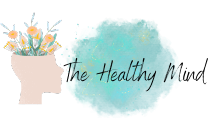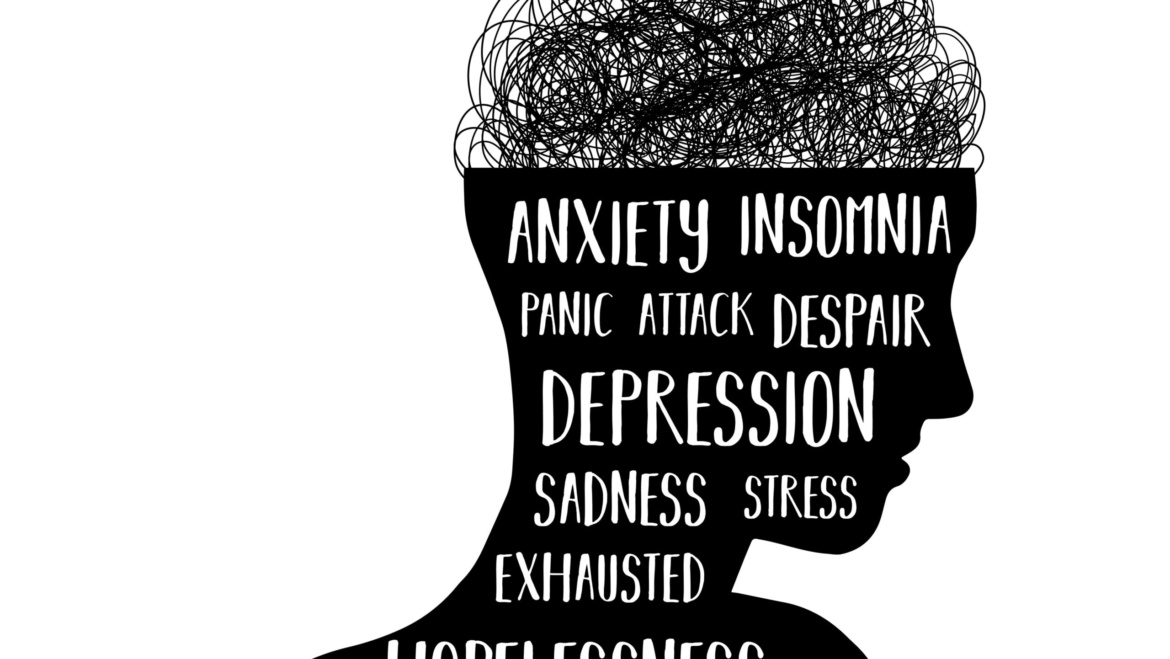Attention all readers! Mental health is an integral part of our overall well-being, yet it remains shrouded in mystery for many. Today, we’re here to provide you with a comprehensive look at the four main types of mental health disorders that affect millions worldwide.
From anxiety and depression to bipolar disorder and schizophrenia, we’ll explore the symptoms, causes, and treatments available for these conditions. So buckle up as we delve into this critical topic and shed some light on what it means to struggle with a mental health disorder.
Introduction to Mental Health Disorders
It’s important to have a basic understanding of mental health disorders so that you can be better informed about your own mental health, or that of a loved one. In this section, we’ll introduce some of the most common types of mental health disorders.
Mental health disorders can be broadly classified into four categories: anxiety disorders, mood disorders, psychotic disorders, and eating disorders.
Anxiety Disorders: Anxiety disorders are the most common type of mental health disorder. They involve intense feelings of anxiety or fear that can interfere with daily activities. Common anxiety disorders include generalized anxiety disorder, panic disorder, and social anxiety disorder.
Mood Disorders: Mood disorders involve persistent and extreme changes in mood that can interfere with daily life. Common mood disorders include depression, bipolar disorder, and seasonal affective disorder (SAD).
Psychotic Disorders: Psychotic disorders are characterized by abnormal thoughts and perceptions. People with psychotic disorders may experience delusions or hallucinations. Common psychotic disorders include schizophrenia and schizoaffective disorder.
Eating Disorders: Eating disorders are characterized by abnormal eating habits that can impact physical health and emotional well-being. Common eating disorders include anorexia nervosa, bulimia nervosa, and binge-eating disorder.
Major Depression Disorder
Major depression disorder, also known as clinical depression, is a serious mood disorder that affects how you feel, think, and behave. Symptoms can include feelings of sadness or emptiness, loss of interest in activities you once enjoyed, fatigue, difficulty concentrating, changes in appetite or weight, insomnia or sleeping too much, and thoughts of death or suicide.
While anyone can experience a temporary bout of depression due to a life event such as the loss of a job or the end of a relationship, clinical depression is more than just a case of the blues. Clinical depression is a chronic condition that can last for weeks, months, or even years. It can interfere with your ability to work, study, eat, sleep, and enjoy activities you once found pleasurable. Depression can also lead to physical health problems such as heart disease and obesity.
If you think you may be suffering from clinical depression, it’s important to seek professional help. A mental health expert can diagnose your condition and develop a treatment plan that may include medication and/or psychotherapy.
Bipolar Disorder
Bipolar disorder is a mental health disorder that causes extreme mood swings. These swings can range from periods of intense happiness, known as mania, to periods of deep depression. Bipolar disorder can make it difficult for people to function in their everyday lives and can sometimes lead to suicidal thoughts or attempts. Although there is no cure for bipolar disorder, it is possible to manage the symptoms with medication and therapy.
The exact cause of bipolar disorder is unknown, but genetics and environmental factors are thought to play a role. Symptoms typically start during late adolescence or early adulthood and can worsen over time if left untreated. The most common symptoms are changes in energy, mood, and activity levels. People with bipolar disorder often experience high levels of emotion in both their manic and depressive states. Additionally, they may also have difficulty managing their daily tasks and responsibilities due to the changes in their behavior.
Bipolar disorder is classified into different types based on the severity of the symptoms experienced. Depressive episodes are generally more common than manic episodes and may last longer. Treatment options vary depending on the severity of the disorder, but typically involve a combination of medications, lifestyle modifications, therapy, and support systems.
Anxiety and Panic Disorders
Anxiety and panic disorders are some of the most common mental health disorders. They can cause a great deal of distress and can be very debilitating. There are a number of different types of anxiety and panic disorders, each with its own set of symptoms.
Generalized anxiety disorder (GAD) is characterized by excessive worry and anxiety that is not focused on any one particular thing. People with GAD often feel like they are always worrying about something, and may find it difficult to control their worry. Symptoms of GAD include feeling restless or wound-up, being easily fatigued, having difficulty concentrating, having muscle tension, and feeling tense or jumpy.
Panic disorder is characterized by recurrent episodes of intense fear or terror (panic attacks) that come on suddenly and without warning. During a panic attack, people may experienceHeart palpitations or accelerated heart rateChest pain Shortness of breathDizziness or lightheadednessSweatingTrembling or shakingChills or hot flashesSense of unreality or detached from oneselfFears of losing control or dyingPeople with panic disorder often live in fear of having another panic attack and avoid situations where they think an attack might occur. This can seriously limit their lives and prevent them from doing things they enjoy.
Social anxiety disorder (SAD) is characterized by intense fear or anxiety in social situations. This can includeFear of being embarrassed or humiliatedFear of offending othersFear of being negatively evaluatedPeople with SAD often avoid social situations and may find it difficult to make friends or maintain relationships.
Agoraphobia is an anxiety disorder in which people have an intense fear of being in public places or situations, such as shopping malls, cars, buses, trains, etc. People with agoraphobia often avoid these places altogether and may restrict their activities severely due to fear of panic attacks or embarrassing themselves.
The symptoms of all types of anxiety disorders can be managed with lifestyle changes, relaxation techniques, cognitive-behavioral therapy (CBT), and/or medications. People with anxiety disorders should seek professional help to best treat their condition.
Schizophrenia
Schizophrenia is a chronic and severe mental disorder that affects how a person thinks, feels, and behaves. People with schizophrenia may seem like they have lost touch with reality. They may hear voices or see things that others do not. These experiences can make it hard for them to keep a job or take care of themselves.
While there is no cure for schizophrenia, it can be managed with medication and therapy. With treatment, most people with schizophrenia can lead productive lives.
Common Symptoms of Each Disorder
Anxiety disorders are the most common type of mental health disorder. Symptoms of anxiety disorders can include worry, nervousness, racing thoughts, sweating, rapid heartbeat, and feeling like you’re going to pass out or vomit.
Depression is characterized by low mood, loss of interest in activities you used to enjoy, fatigue, sleep problems, and reduced appetite. People with depression may also have difficulty concentrating and making decisions.
Bipolar disorder is a mental health disorder that causes extreme mood swings.Symptoms of bipolar disorder can include cycling between periods of mania and depression, chaotic relationship patterns, risky behavior, and substance abuse.
Eating disorders are characterized by an unhealthy relationship with food. Symptoms of eating disorders can include severe restriction of caloric intake, binging and purging through vomiting or laxative use, and distorted body image.
Treatment Options for Each Disorder
There is no one-size-fits-all treatment for mental health disorders. The most effective approach depends on the type of disorder and the individual’s unique situation.
Mood disorders, such as depression and bipolar disorder, are often treated with medication, therapy, or a combination of both. Medications used to treat mood disorders include antidepressants, antipsychotics, and mood stabilizers. Therapy for mood disorders can include cognitive behavioral therapy (CBT), interpersonal therapy (IPT), and/or psychoanalysis.
Anxiety disorders are typically treated with medication, therapy, or a combination of both. Medications used to treat anxiety disorders include anti-anxiety medications, antidepressants, and beta-blockers. Therapy for anxiety disorders can include CBT, exposure therapy, and/or psychodynamic therapy.
Eating disorders are notoriously difficult to treat and often require a team approach that includes medical professionals, therapists, dietitians, and support groups. Medications used to treat eating disorders can include antidepressants, anti-anxiety medications, antipsychotics, and/or mood stabilizers. Therapy for eating disorders can include CBT, dialectical behavioral therapy (DBT), interpersonal therapy (IPT), and/or psychoanalysis.
Personality disorders are usually treated with medication and/or psychotherapy. Medications used to treat personality disorders can include antidepressants, antipsychotics, and/or mood stabilizers. Psychotherapy for personality disorders can include cognitive behavioral therapy (CBT), dialectical behavior therapy (DBT), and/or psychodynamic therapy.
Substance use disorders generally require a combination of medications, counseling, and lifestyle changes. Medications used to treat substance use disorders can include antidepressants, anti-anxiety medications, naltrexone, buprenorphine, and acamprosate. Counseling for substance use disorders typically includes cognitive behavioral therapy (CBT), motivational interviewing, and Twelve Step programs such as Alcoholics Anonymous.
Psychotic disorders are usually treated with medications such as antipsychotics or mood stabilizers. Psychosocial treatments for psychotic disorders include individual therapy, family therapy, psychosocial interventions such as occupational therapy and community support services.
How to Seek Help for Someone with a Mental Health Disorder
Mental health disorders are nothing to be ashamed of, and seeking help for someone who is struggling is a noble thing to do. But how do you go about doing it? Here are some tips:
1) Talk to the person in private. This is not a conversation that should be had in public. Choose a time and place where the person feels comfortable talking, and try to avoid being judgmental or dismissive.
2) Listen more than you talk. It can be tempting to want to offer advice or share your own experiences, but resist the urge. The most important thing you can do right now is simply listen to what the person has to say.
3) Encourage them to seek professional help. If the person is open to the idea, encourage them to seek help from a mental health professional. This is often the best course of action, as they can provide expert diagnosis and treatment.
4) Offer support and reassurance. Let the person know that you support them and will always be there for them. Reassure them that they are not alone in this struggle and that help is available.
Conclusion
Mental health disorders affect an estimated 1 in 5 U.S. adults, yet so many remain unaware of the specific types and symptoms of each one. In this article, we provided a comprehensive look at four main types of mental health disorders – anxiety, depression, bipolar disorder, and schizophrenia – to help increase awareness and understanding about these issues.
We hope that by shedding some light on what these conditions involve, more individuals will feel empowered to seek treatment for themselves or loved ones if necessary.





Add Comment